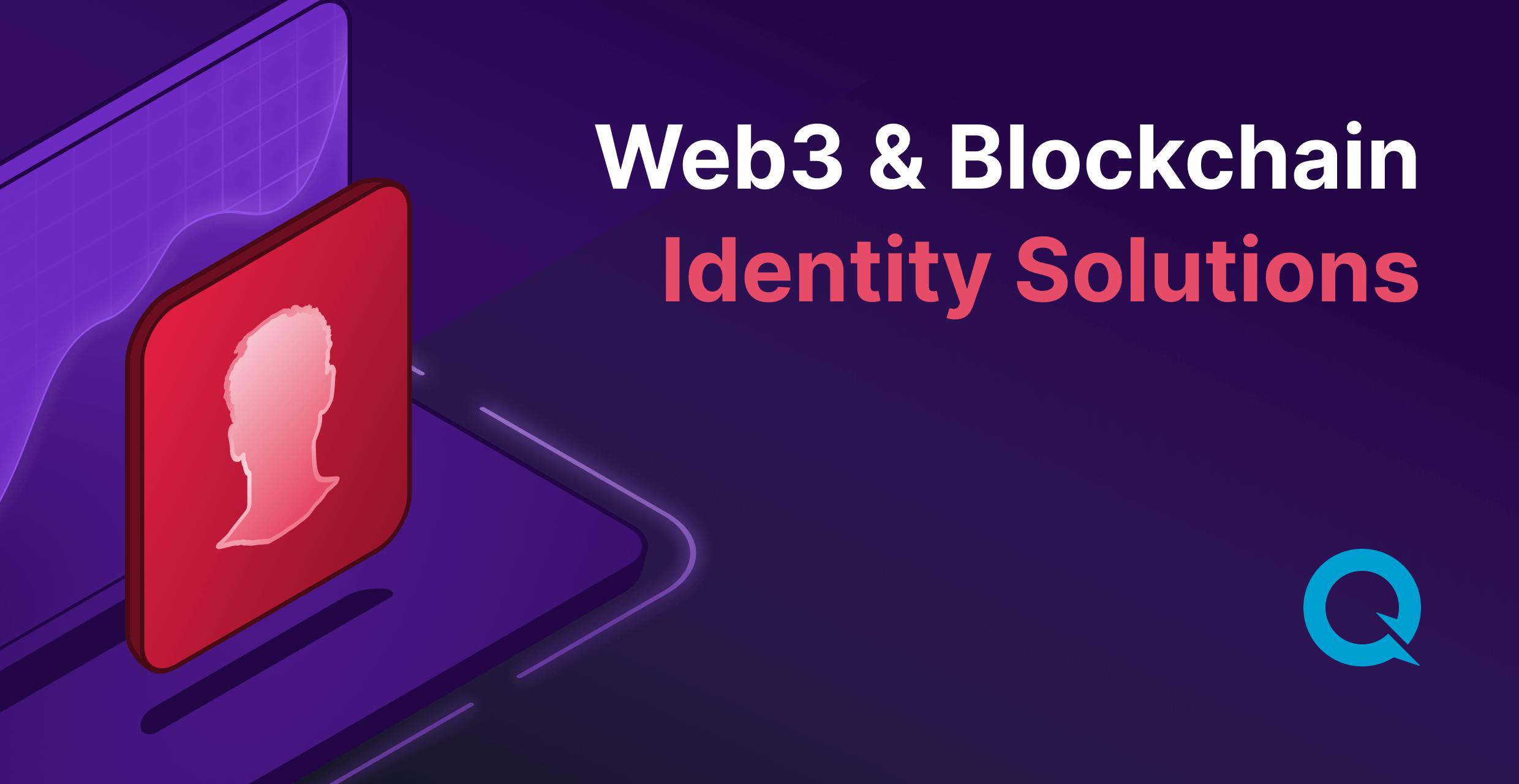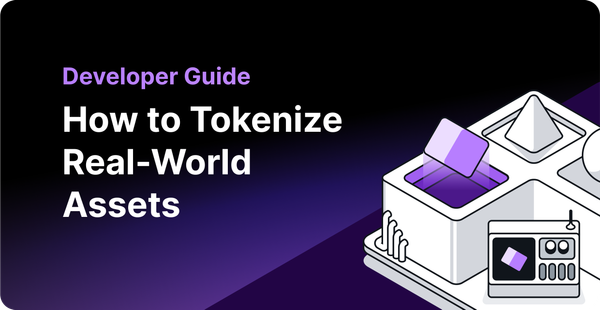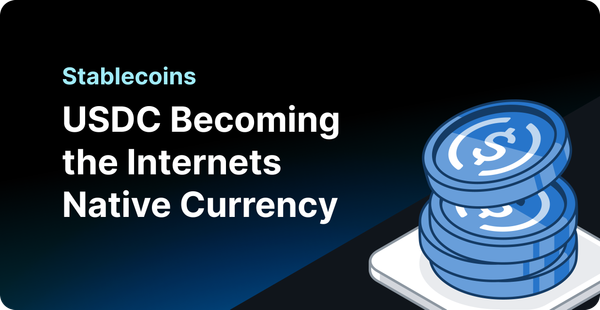Web3 and Blockchain Identity Solutions for More Protected, Convenient Digital Identities
An introduction to Web2 and Web3 digital identity solutions.

Since the early days of the internet, digital identity, or online identity, has been an important and much-discussed subject for which there have been multiple widely-adopted iterations since Web1 transitioned to Web2. Now, as our lives become increasingly digitized and the potential use cases of Web3 and blockchain technology become further explored, we’re once again discussing how new technology — in this case, technology built with decentralized blockchains — can improve upon users’ digital identities to provide more security and convenience.
Powered by blockchain technology, Web3 identity solutions are poised to provide users with increased security and convenience — but first, they need user interfaces (UI) that make the digital infrastructure suitable for widespread adoption. Simple, secure, and easily adopted is the goal. Closed systems, like Venmo, CashApp, and similar, are straddling the middle ground between Web2 banking and identity solutions, though they still leave users without autonomy.
With current Web2 solutions, your digital identity is controlled by a third party, leaving your online identity exposed to the possibility of malicious actors gaining your personal information. There’s all the fine print that goes along with agreeing to use a service, too, with your data being mined for countless purposes. For example, targeted advertisements, which on a surface level are often more helpful than seeing ads you don’t care about, but that’s only the tip of the iceberg of data collection. We often have little to no recourse if we need an online product or service and are forced to agree to whatever the stipulations of the agreement are or forego using the service.
What is Digital Identity/Online Identity?
As Blockworks explains, your identity—who you are physically and digitally— is an open-ended answer defined by two complex, evolving sets of information that encapsulate your identity data:
- Identifiers: Information that represents you as a person, including your name, known aliases or nicknames, your face, social media profiles, and crypto wallet addresses.
- Identity Claims: These are any claim that supports one of your identifiers, including your career, nationality, beliefs and values, hobbies, your family, and your accomplishments and failures.
Your identity — what makes you You — is defined by how you choose to express the relationships between the two evolving sets of data — your Identifiers and Identity claims. Offline, in “the real world,” you can mold and adapt your identity and the reputation resulting from what you choose to present to different people. The concept of your identity is flexible and can be altered to suit your needs. It may be difficult in certain instances, but it’s certainly doable.
Web2 identity solutions, such as logging into websites and apps with Facebook and Google, are not an ideal solution because it restricts your sovereignty to represent yourself how you would like to express your identity. When using one of these services, you have to follow their rules for how your identifiers and identity claims are expressed. A common way people circumvent this lack of autonomy in their online identity expression — choosing how and to who you give which pieces of information about yourself — is to create different social profiles, accounts, email addresses, and such. This is a tedious process forcing you to jump through different hoops to cultivate the identity you wish to express to different people and groups.
With Web3 identity solutions, many of which are currently under development by big players in the blockchain world, your digital identity can become more autonomous, with increased sovereignty and security than existing Web2 identity solutions. The other main goal of using Web3 for digital identity solutions is the greater level of convenience it will provide users. You’ll only need one login name, or in some cases, a series of emoticons or letters, for many site and application logins.
What is Web3?
To understand what users can hope to gain from Web3 identity solutions, first, it’s integral that we establish what’s meant by Web3. The next evolution of the internet, known as Web3, is blockchain technology, of which we’re beginning to see many new viable uses beyond the decentralized cryptocurrencies that opened the doors to Web3 through communities of users and developers that value the empowerment and autonomy provided by financial sovereignty.
With blockchain technology, Web3 identity solutions can be much more secure and convenient than existing Web2 identity solutions, providing users with the freedom to control their own online identity. You won’t have to trust your digital identity and the personal digital representation of yourself to a third party that gatekeeps how and to who your digital identity is expressed.
The Problem with Existing Web2 Digital Identities
With the current model of Web2 digital identity solutions— for example, logging into websites and apps with Facebook or Google— users are required to entrust their personal information to centralized authorities to gain access to a website or app. Trusting a third-party platform with your digital identity and the privacy of your personal information hasn’t proven a good model, as the majority of internet users have found, and leaves you without an adequate way to protect what you share and which organizations and other users have access to this information.
The Benefits of Web3 Digital Identity Solutions
Web3 identity solutions leverage blockchain technology to create decentralized digital identities that are fully owned and controlled by the individual user rather than a centralized authority, such as third-party platforms like Facebook and Google. With Web3 digital identity solutions, your online identity is entirely self-sovereign, providing you with much greater control over your personal information and privacy.
Increased Security and Convenience for Your Digital Identity
With Web3 digital identity solutions, users own and control their identity with complete sovereignty, alleviating the issue of trusting a faceless corporation with your personal information and the way your online identity is expressed.
Web3 digital identities are built on blockchain technology known as decentralized identity systems (DID) and provide secure, tamper-evident, and tamper-resistant storage of your identity-related data. With Web3 digital identity solutions, users are able to create, manage, and authenticate their identity, or identities, across multiple Web3 applications and services without needing to rely on any central authorities to authenticate their identity.
The Current State of Web3 Digital Identity Solutions
Currently, while Web3 digital identity solutions are a great idea, they can be complex, fragmented, and challenging for users to navigate and manage. Before widespread adoption is possible and we can collectively move away from our reliance on Web2 digital identities, Web3 online identities will need to become more accessible with less complex User Interfaces and streamlined User Experience. The good news is there are many big players and startups alike working on doing just this, and Web3 identity management frameworks will continue their rapid development trajectory toward highly-accessible digital identity solutions.
The average user without a deep understanding of blockchain technology will need to be able to sign up and use their Web3 online identities without hassle. Cointelegraph refers to this necessary assessment of the usability and user experience of software as “the grandparent test,” meaning mainstream adoption is possible if the software can easily be used by a grandparent without much technical knowledge or know-how. Simple, straightforward, and easy-to-use software.
Real-World Examples of Web3 Identity Solutions
While still a work-in-progress towards mass adoptability, there are already Web3 digital identity solutions available for accessing decentralized marketplaces and exchanges, Web3 decentralized websites, dApps, NFTs, and DAOs (Decentralized Autonomous Organizations).
Below, we’ll briefly cover some of the most notable Web3 digital identity solutions and how you can get involved to remain up-to-date with what’s happening in Web3. User participation is needed for iterative technology that helps the blockchain community continue moving forward toward accessible, autonomous online identities with more security and convenience than Web2 digital identities.
Ethereum Name Service (ENS)
From the second-biggest dog in the world of crypto behind Bitcoin and the premier blockchain for building dApps, decentralized exchanges, and decentralized websites comes the Ethereum Name Service, or ENS, a major leader in Web3 digital identity solutions.
With ENS, users can store all of their crypto addresses and receive any cryptocurrency, token, or NFT. In addition, users can upload their website to the peer-to-peer InterPlanetary File System (IPFS) and access it with their ENS name. The native DNS (Domain Name Service) for ENS is .ETH, but DNS names you already own are also supported.
An issue, however, is the price tag. Depending on how long, unique, and desirable your chosen ENS domain is, it could be as little as $5 a year up to thousands of dollars to purchase and renew. The issue of price can severely impact the accessibility for users with limited financial resources, limiting their ability to participate in the Web3 ecosystem via an ENS domain.
Unstoppable Domains
Unstoppable Domains uses the blockchain variant of DNS, known as Crypto Name Services (CNS), to handle the registration of Web3 domains. With Unstoppable Domains, users can register a Web3 website with a domain they control completely, send cryptocurrencies and tokens via their personal Web3 username, and easily interact with the digital world with a single login.
One of the huge benefits of using Unstoppable Domains for registering your Web3 digital identity is there’s a single, one-time purchase price. After purchase, your digital identifier is yours for life with no renewal fees, no third-party oversight, and no restrictions or requirements of what personal information you choose to share or with who it’s shared.
Y.at
With Web3 startup Y.at, users can take their digital identities in a totally new direction and become identifiable via a series of one to five emoticons, or emojis. With a Y.at name, users can utilize their name as a digital username, website URL, and even as a payment address for digital wallets.
Space ID
Space ID was created as a way to aggregate and collect your various digital identities across different blockchains under a single, unified interface. Like other digital identity solutions, Space ID replaces complex Web3 addresses with a human-readable Web3 domain identity to use for all of your Web3 interactions and activities.
In addition to simplifying users’ aggregation of different digital identities they use with various blockchains, Space ID is also incredibly quick to integrate, boasting a 30-minute setup process from start to finish.
Web3 and Your Unique Digital Identity
While there are certainly great options available for users ready to claim their Web3 digital identity and begin streamlining their Web3 interactions under a single name or domain, there’s still quite a ways to go before reaching mass adoption and Web3 online identities becoming the standard. It’ll take simple, intuitive user interfaces that pass the “grandparent test,” along with more companies, organizations, and users jumping on board, but rest assured, digital identities aren’t going anywhere; they’re only evolving into more secure, convenient solutions.

About QuickNode
QuickNode is building infrastructure to support the future of Web3. Since 2017, we've worked with hundreds of developers and companies, helping scale dApps and providing high-performance access to 22 blockchains. Subscribe to our newsletter for more content like this, and stay in the loop with wh





